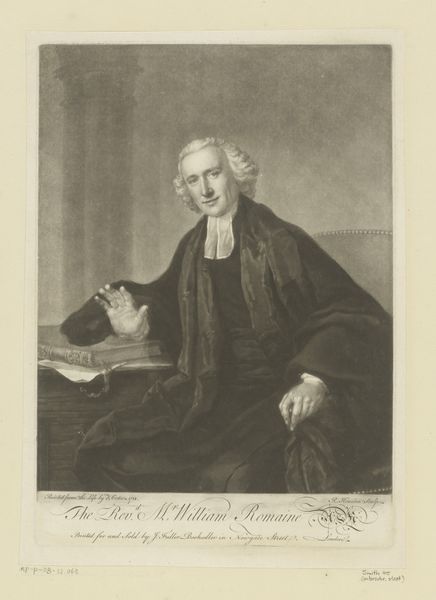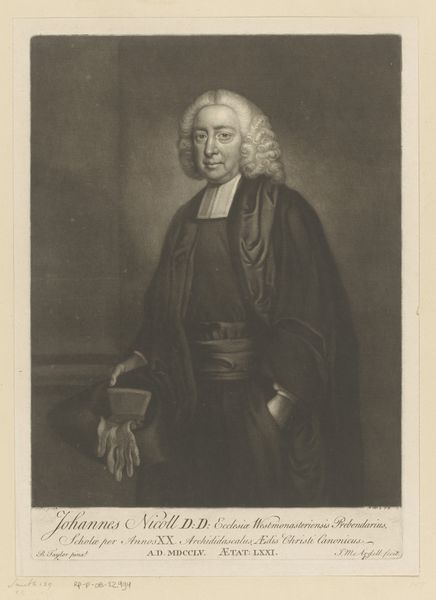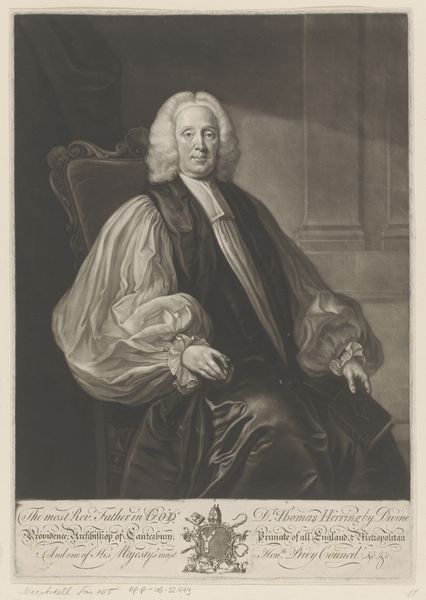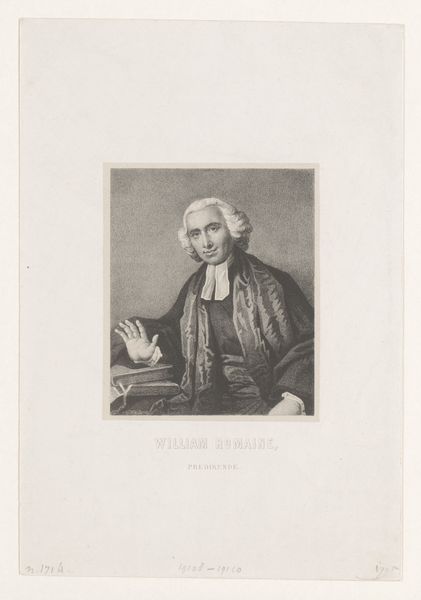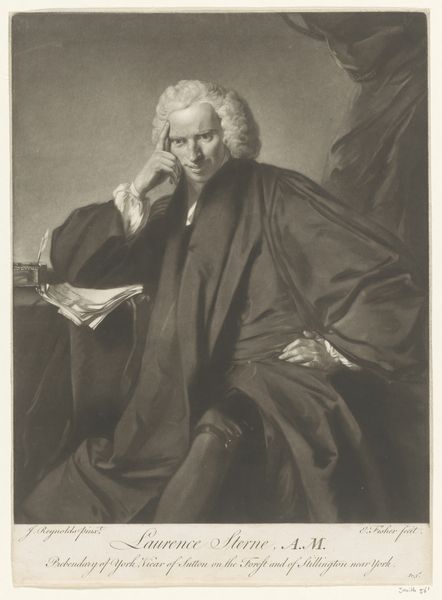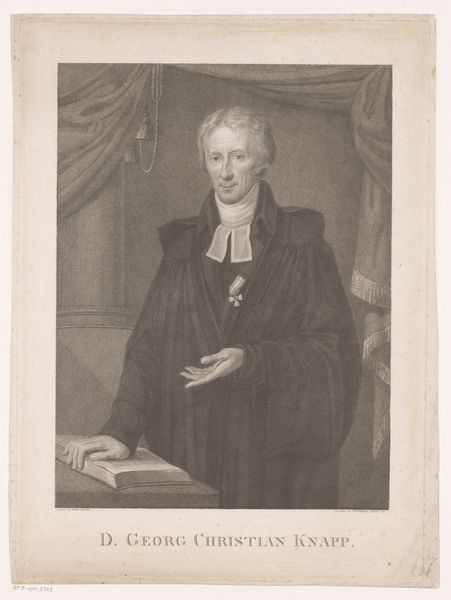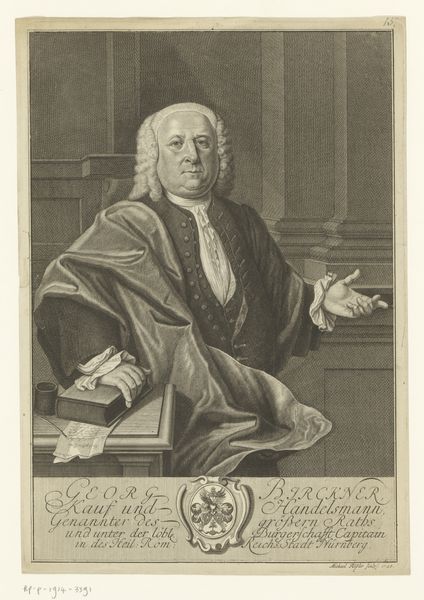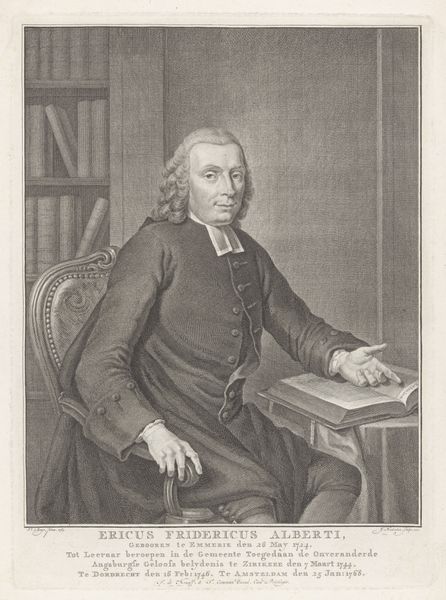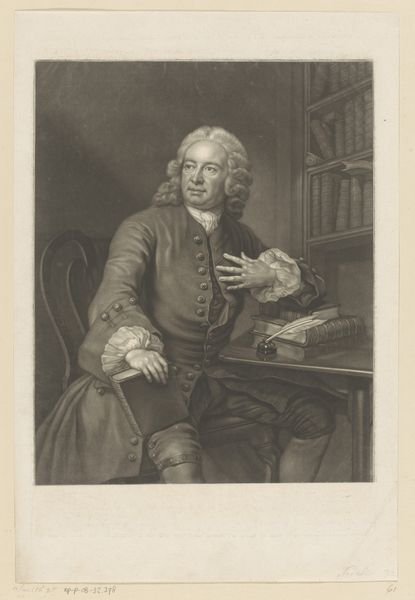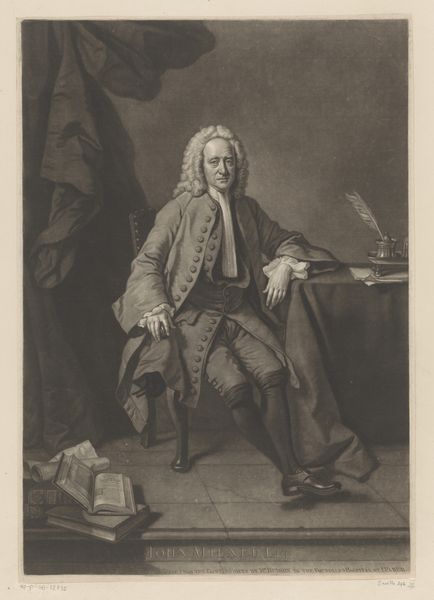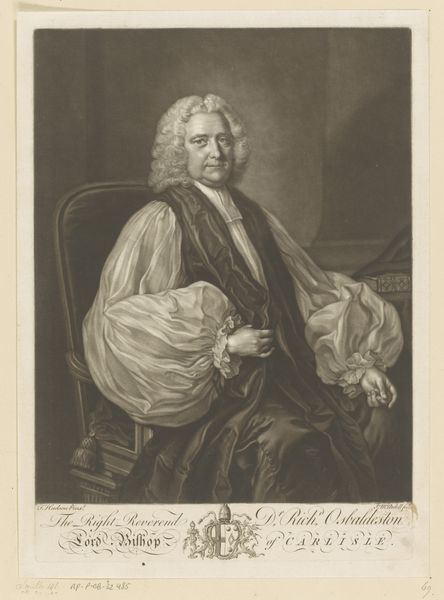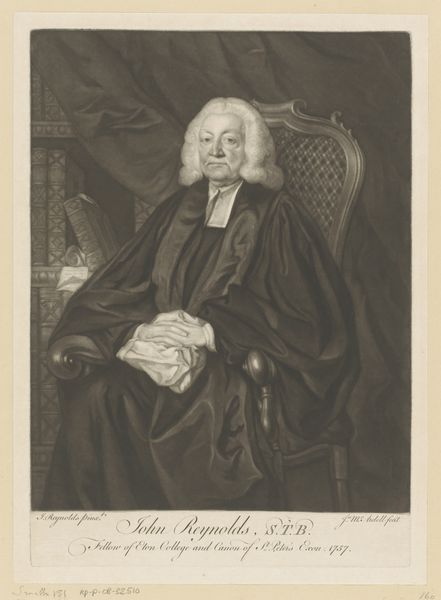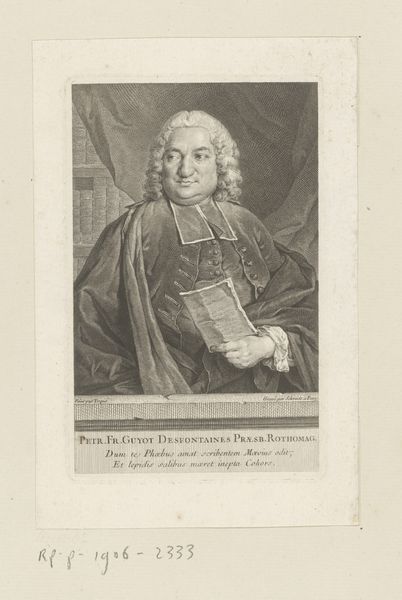
#
personal snap photobooth
#
wedding photograph
#
photo restoration
#
photo element
#
wedding photography
#
archive photography
#
historical photography
#
portrait reference
#
old-timey
#
19th century
Dimensions: height 356 mm, width 254 mm
Copyright: Rijks Museum: Open Domain
Curator: This is a portrait of William Romaine, created sometime between 1746 and 1766, and currently held in the collection of the Rijksmuseum. Editor: My first impression is one of restrained power. There's a stillness to it, but his raised hand and direct gaze suggest he's about to speak, to command attention. The muted tones only add to that feeling. Curator: The artist, Richard Purcell, presents Romaine as a figure of authority, and of course, we need to consider the social context in which this image was created. How would its viewers understood such symbols of class, education and male authority? Editor: Absolutely. Romaine's attire, the very subtle background hints of wealth, speak volumes about his social standing. What interests me is unpacking how the power dynamics inherent in a portrait of this kind shaped not only its creation but also its reception and its use over time. The slight smile indicates confidence. Curator: Consider also the book beside him. The book isn't just a prop. Books represent knowledge, access to the written word, privilege, of course. Editor: That is, if we assume that the audience or recipient would automatically acknowledge his position. I think contemporary interpretations need to consider that traditional, class-based readings aren't universal. Perhaps a symbol of power to some may be seen by other, oppressed audiences as a mark of the very structures that subjugate them. Curator: An interesting counterpoint. What I find fascinating is how the image works to construct and reinforce notions of authority, even within the visual language of portraiture. And you make an excellent point of access, audience and context to deconstruct traditional perspectives of analysis. Editor: It also shows the beauty of analyzing art that is, at once, historical and capable of re-interpretations that consider more inclusive readings of art that continue to serve audiences across the gender and socio-political spectra.
Comments
No comments
Be the first to comment and join the conversation on the ultimate creative platform.
